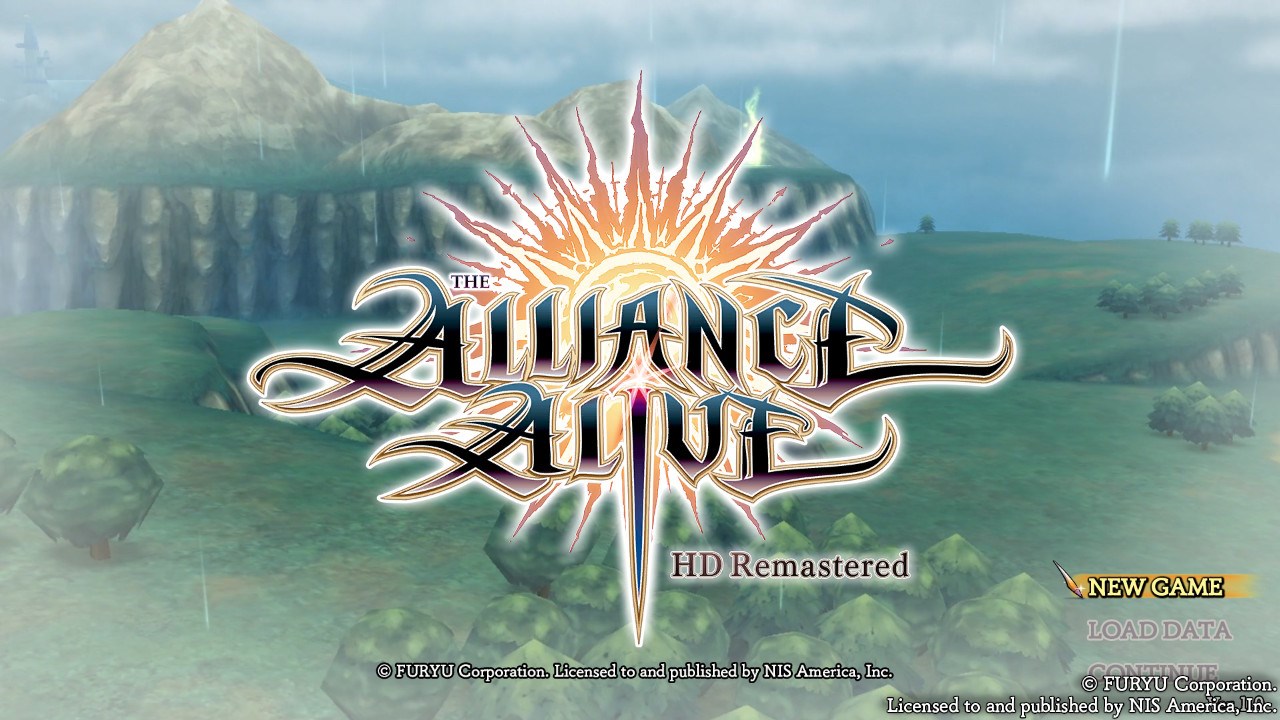[Review] The Alliance Alive – Nintendo Switch
The Alliance Alive
Nintendo Switch
Developed By : Cattle Call
Published By : NIS America
Category : Adventure, RPG
Release Date : Oct 8, 2019
Through all of the generations that video games have been around, there have always been RPG’s. Even before video games, when groups would huddle around a table playing some quests in a good D&D session, role-playing has always been a hot point of gaming. Today, that genre has been broken down into a bunch of sub-genres, of which one of the more widely popular is the JRPG. This particular sub-genre is one that I personally have found it hard to get into.
I have always been a person that is drawn to experiencing a story, and sometimes in JRPG’s it’s just not so easy to do that. A lot of the gameplay is centered around grinding out levels, and finding as many little battles as you can to do so. For me, it’s fun at first but I eventually hit a point where I just want to further the narrative. But, if there’s one thing I always try to do, it’s keep an open mind to things and experience them before I judge them. It’s with that open-mindedness that I come here to sit down and experience the newly HD remastered release of The Alliance Alive for the Nintendo Switch.
Nothing But…Blue Skies?
The Alliance Alive is set in a world that is a fraction of what it once was…maybe. Legend has it that over a thousand years ago, Daemons invaded the world from another realm, decimating humanity and taking rule over them. They created what is known as the Great Barrier and divided the world into many realms, blacking out the sky to keep their new pets at bay. But, as is usually the case with legends, most people believe that they’re just that : stories to keep hope alive and provide a reason to go on for one more day.
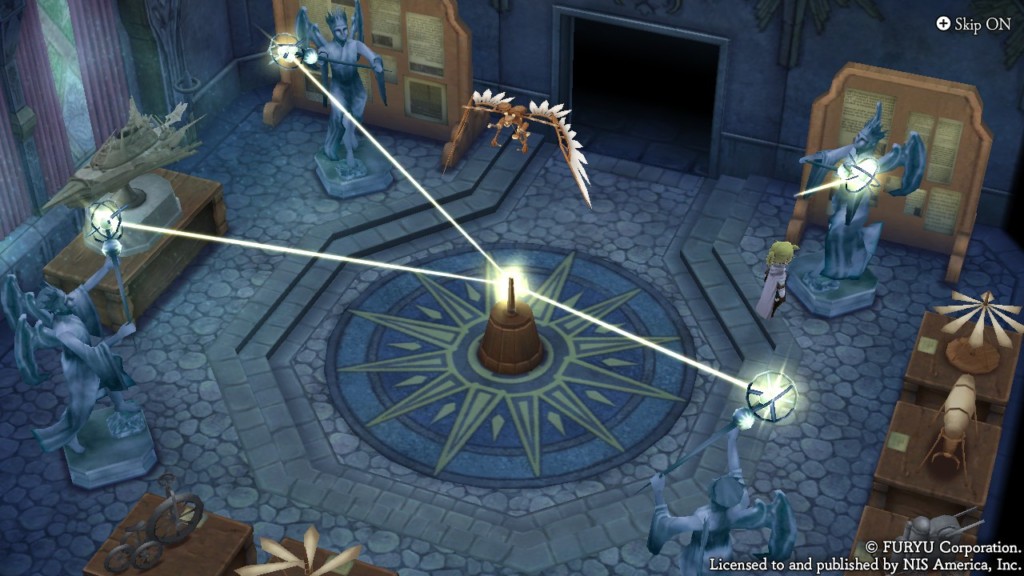
Most, that is, except for Azura. She believes in the legends very strongly, and hopes one day to find proof that it was more than just a story. One day, Azura’s father sends her and her friend Galil off on a very important mission to deliver cookies to a nearby tower…only the basket of cookies really contains a secret letter with important information (but don’t kid us, dad, we know the cookies are the real importance!). While off delivering the cookies, the person they meet reveals an Ancient building where rumors tying into the old legend are swarming. With all the free time they have now, Azura convinces Galil to check out this building and see if maybe, just maybe they can find proof that the sky was once blue.
But the building is under guard when they get there. Luckily, one of the outside walls is cracked, and breaking and entering isn’t a crime the Daemons are known to persecute. Azura shatters the wall, and inside the duo finds rooms lined with legendary weapons, armor, and giant puzzles consisting of statues and light. They manage to uncover a staircase made of light, and climb it up to the top…where they find exactly what Azura has wanted all along : proof of the blue skies that once was.
However, she’s not long for seeing it, or anything else for that matter. One of the Daemons appears in the room before them, and removes Azura’s eyesight as punishment for the things that she’s seen. Along with Galil, they run from the building, barely escaping with their lives, and a couple of memento’s that give Azura’s father proof that maybe the legend is a little bit more than a story. With his blessing, they along with a couple other companions set out to find a scholar in the Living Wood to learn more about what they have, hoping that it just might be their first steps to bringing those blue skies back to reality.
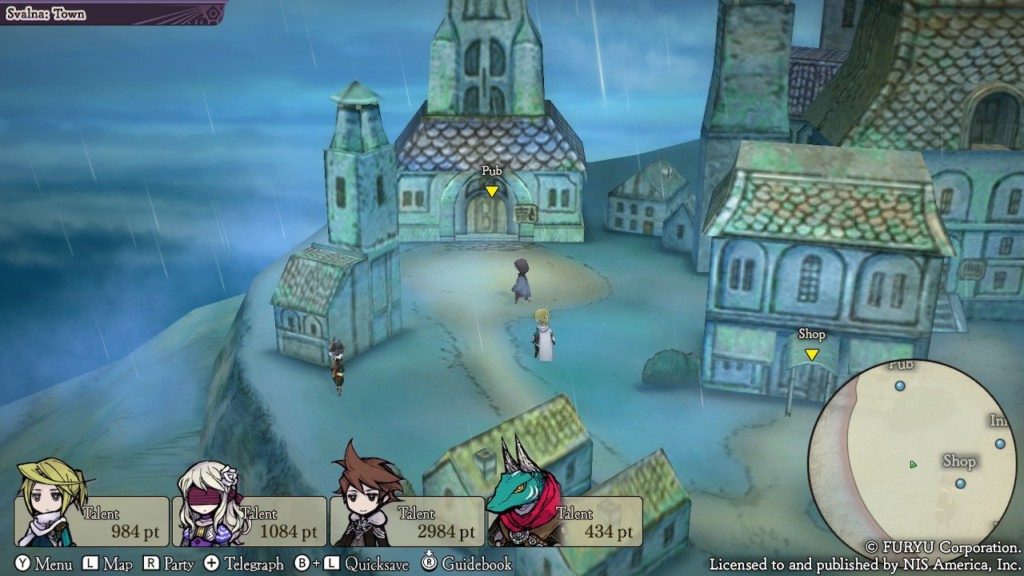
Parties For Everybody!
While I may not be a fan of the genre, Alliance Alive has a lot of, if not all the typical features of a JRPG. The majority of your movement will take place in the game’s Overworld, which changes visually with the location you’re in. These locations will have various amounts of sub-locations within them that you can go into. Guild towers, shops, inns, and even more depending on where you are, giving you a chance to experience more of the NPC’s and any lore they may have.
You are able to have a party of up to four characters at one time, and when you are on the Overworld this party will be represented by whoever you have set as the leader. Unless a situation arises that calls for everyone to be out, such as specific indoor scenes or (naturally) combat, this is how the party will always be.
Throughout the entire game, you’ll meet a total of nine different characters from all sorts of backgrounds. You obviously start off with Azura and Galil, but eventually you get to meet a couple of the Daemons themselves, a famed professor who has groundbreaking theories on the Daemons and their Great Barrier, as well as guards and friends very close to Azura’s father.
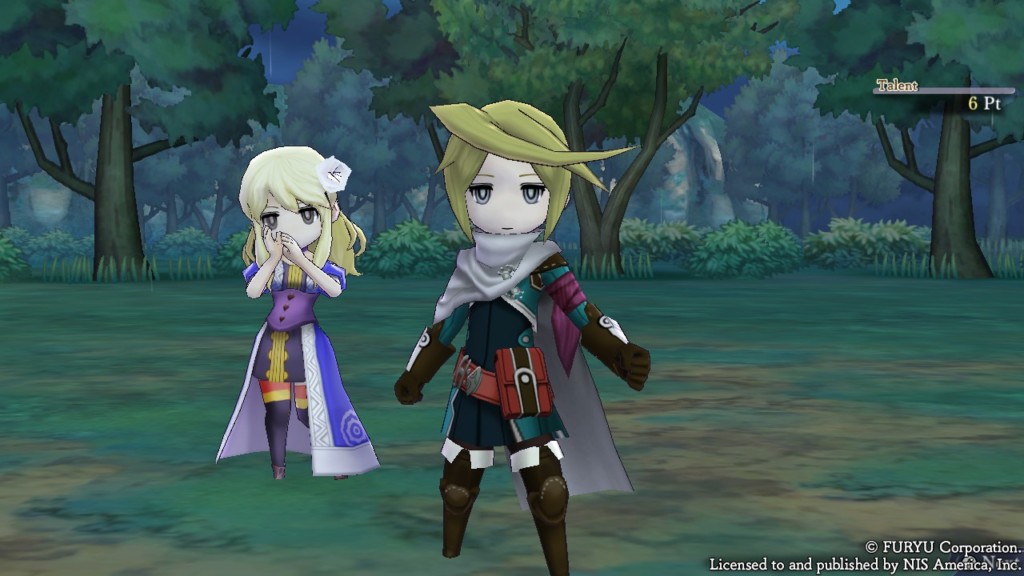
Each character begins with their own proficiencies in certain weapon types and battle tendencies such as Special moves costing less SP to use. As you battle and level them up, you can choose to extend these skills, or focus them in other ares to give yourself a wider range of options in combat.
Duking it Out
No matter how many members are in your party, their layout in combat is that of a small grid with three lines : front, middle, and back, and are important for both your party, and your enemies. How it breaks down is that the front row is the one which gets attacked more often, but can also provide more powerful melee-type attacks. The back row generally gets attacked less, but will not do so well with the close-range attacks, so positioning your members will be key to some battles.
Combat is turn based, and the order of attackers is determined by their speed stat. It is possible in the overworld for one side to “attack” first by simply walking into the other with them being unaware. If done properly, the early attackers will gain a boost in the speed stat for their whole party that generally means they’re guaranteed to all attack first.
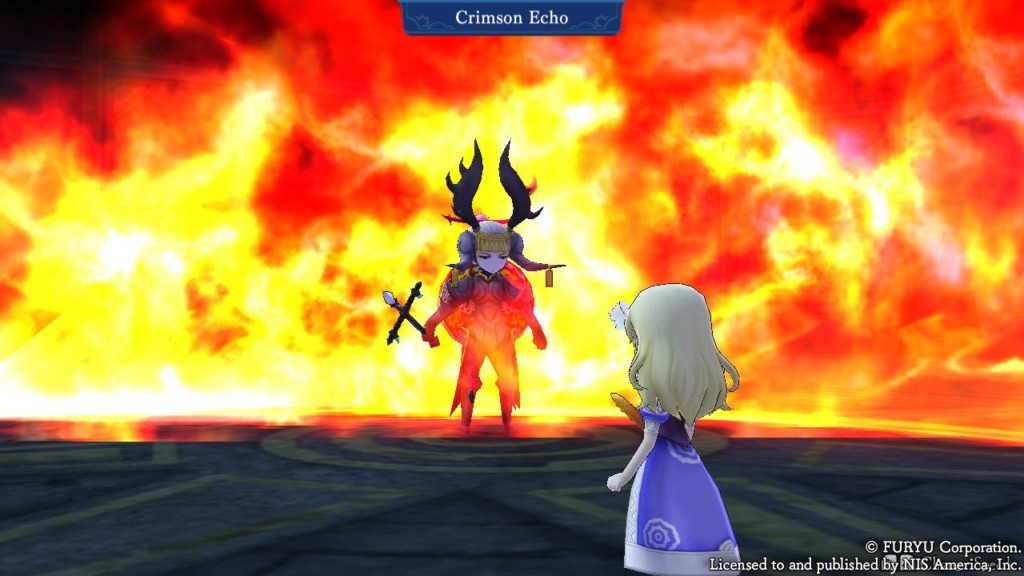
Each member has their own HP and SP stats, relating to their health and amount of points they have for combat arts and spells respectively. Each cycle of turns, you will select an action for each of your party members, and once they’ve all been locked in the selected actions will play out. If there are surviving members on both sides, a new turn will cycle and the process will repeat until one side or the other becomes victorious.
While taking your turn, it’s possible for your party members to enter one of two states : Awakening, or Ignition. Awakening will happen when a member has stepped forward to take their attack. If they Awaken, they will learn a new move and use it on the spot. From what I gathered in my time, it seemed this was a random trigger, and the in-game guidebook even states that there is “a certain chance…” that a character will enter this state. Although at the same time, it felt a little more fixed, because there were some fights that I would have to redo due to poor combat decisions, and I’d have the same character Awaken at the same point in battle and learn the same new move.
An Ignition state is one that is more devastating, and can swing things heavily in your favor. This state is triggered by one of three instances : either dealing damage, taking damage, or if an ally falls in battle. From my experiences, it was this third instance that caused the trigger more often than not. While in this state, you can perform a Final Strike move. This imbues one of your weapons with a ton of power and lays a lot of damage into your target’s face, the only downside to this being that it completely destroys the weapon. Don’t fret, this is something that can be fixed once you make it to the right place.
After a battle completes, you’ll get a tally screen of how much So (currency) and Talent you’ve earned, as well as any new moves learned by your characters, and whether or not they’ve leveled up their main level, and any stats long with it such as HP, SP, or weapon attributes. The only reason you won’t see this screen after a battle is if you managed to trigger a Chain before entering, which just means multiple enemies were in close proximity in the Overworld when you initiated a fight. These chained battles will string together until you get through them all, with no healing in between individual fights.
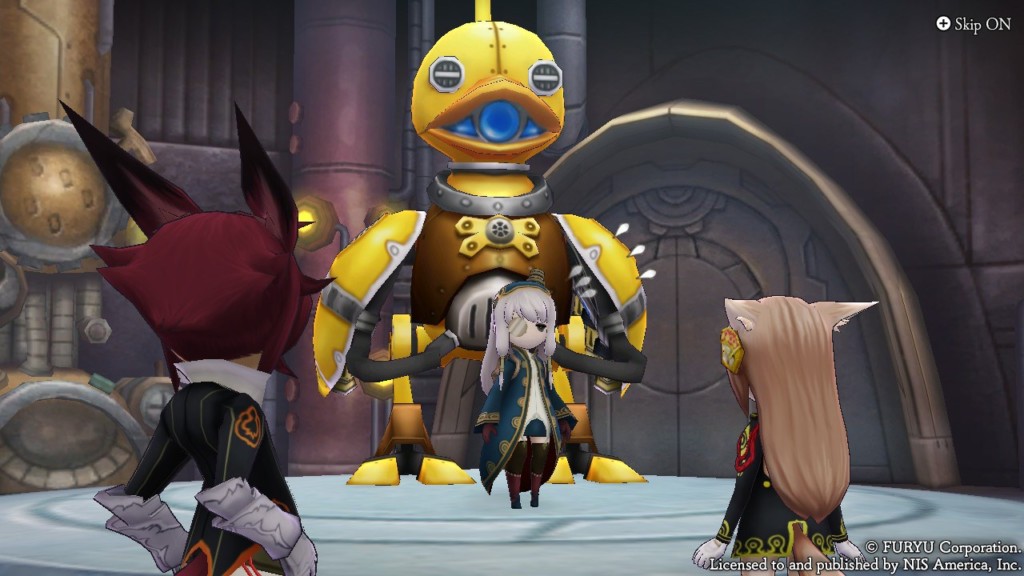
Everything Else You’ll Need
If you’re not spending your time in the Overworld or fighting, chances are you are nose-deep in The Alliance Alive‘s menu system. Here is where you’ll apply all of your Talent points that you earn in battle, or organize your dozens of items you’ll have gathered from shops, or found scattered all over the world. These will do everything from permnantly buffing your stats if they can be equipped, or temporarily boosting stats if its a consumable, or healing you a little bit or replenishing your SP on the spot.
Inns are a place to go for a few reasons, and naturally one of those reasons is for creating a hard save point (don’t worry you can quicksave on the go too). Resting at an Inn will replenish your HP and SP as well, and it will refill your HP specifically to it’s max value. If one of your party member’s gets downed during combat, they can still be hit while unconscious. If they are hit while down, you will see a red damage number appear, which will be taken away from your max HP value. All your health is restored after battles end unless you have taken damage in this way, but this can be negated by resting at an Inn.
You’ll also meet the five guilds contained within the world as you venture on your journey. Each guild has two things that it offers to you in your quest, in the form of Primary Activities and and support effect. The primary activities is really just their purpose in the game, so for instance the Blacksmith Guild is where armor and weapons are developed, or the Signimancy Guild that focuses on the number and types of spells you can use. The status effects are things that have a higher chance of being triggered if you engage in combat near that tower, like the Blacksmith Guild launching a volley from their blast cannon when you enter battle to help damage your enemies.
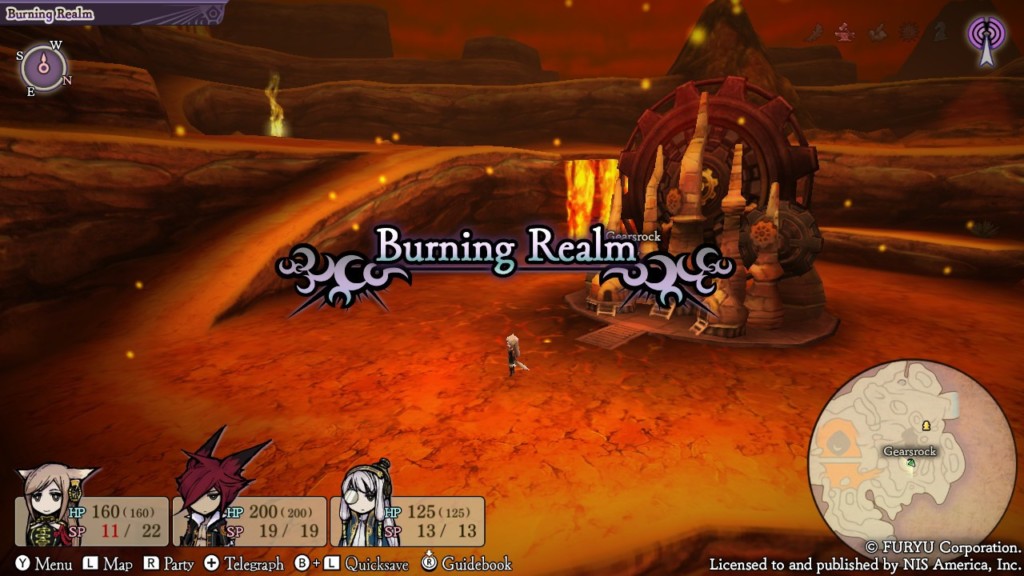
Changing Opinions?
I kicked this review off by pointing out my lack of experience in the realm of JRPG’s. Has playing The Alliance Alive completely changed my views on that? Am I going to be a JRPG fiend now, sucking up every one of these games at every opportunity? No. But I can say that I did enjoy this one. I haven’t finished it as of this writing (again, JRPG, lots of grindy), but presently I do want to finish it.
I love the setting and the story, the Daemons sealing off the world with the Great Barrier, and the humans who still have hope for the blue skies that they’ve never seen. Before this game, I had a few specific gripes specific to JRPG’s and what turned me off from playing them. Those being the completely random and grindy fights, as well as the superfluous amount of text dialogue boxes that can make them feel more like a “Keep Pressing A Simulator”. And while you do need to press A to advance most conversation bubbles, when there is extensive dialogue about to happen, the game takes on an almost-cutscene approach which smooths the process out greatly.
This game may have not changed my mind on the sub-genre all together, but it definitely made itself the exception to the rule for me. I loved the set-up for the story, it was introduced in a really great way. By far, though, my favorite feature was the fights in the Overworld. A lot of JRPG’s rely on an entirely random system of these where they can just be triggered whenever you’re walking. Here, there are physical enemies wandering around that need to be walked into (or them walk into you) before a fight is triggered. Even the fights can be smoothed out, since your last chosen move is automatically highlighted on the next turn. You can set your fights to “Auto” and watch them play out, choosing to intervene if and when you need to.
So in the end, if The Alliance Alive can persuade a non-JRPG to not only enjoy this game, but want to see it through to the end, it’s gotta be safe to assume that it’s filled with all the right stuff for hard-hitting fans of the genre. This game in particular is an HD Remaster of a game that had previously been out on the 3DS, but unfortunately I cannot specifically point out what things are different and improved between the two releases. But the only way I wouldn’t recommend this title over the original is if things were made worse by making an HD Remaster, and I just don’t think that’s a possibility. So pick this one up when it comes out on the 8th, and go find those blue skies







